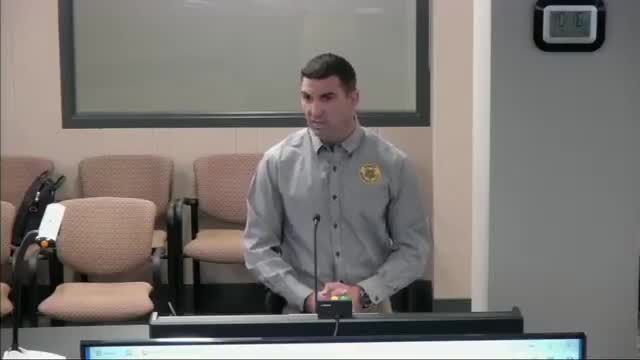Minnehaha County approves multiple infrastructure funding agreements for rural projects
March 18, 2025 | Minnehaha County, South Dakota
This article was created by AI summarizing key points discussed. AI makes mistakes, so for full details and context, please refer to the video of the full meeting. Please report any errors so we can fix them. Report an error »

The Minnehaha County Commission convened on March 18, 2025, to address several key agenda items, primarily focused on infrastructure funding and improvements.
The meeting commenced with a discussion on the approval of a funding agreement between Minnehaha County and Wall Lake Township for rural access infrastructure. Jacob Mars from the County Highway Department explained that this agreement outlines the distribution of previously awarded rural access infrastructure funds. The commission unanimously approved the agreement, which includes an 80/20 grant structure, allowing for 50% of the funds to be disbursed upfront to assist with project costs.
Following this, the commission authorized a similar funding agreement with Logan Township, which involves $287,960 for rural access infrastructure. This agreement also establishes guidelines for the use of the funds, ensuring compliance with construction standards. The motion passed without opposition.
The meeting then shifted to a significant grant agreement with the South Dakota Department of Transportation for the replacement of Structure 514940, located southwest of Crooks. Mars reported that the county had been awarded an $814,500 grant, covering 80% of construction and engineering costs. The structure is currently the only posted bridge on a county road and is slated for replacement in the 2026 budget. The commission discussed the possibility of expediting the project if funding allows, with the aim of putting it out for bid sooner.
Additionally, the commission approved an amendment to the bridge improvement grant agreement for the preliminary engineering of Structure 516199. This agreement involves Civil Design Inc., which has been tasked with conducting a type size and location study for the bridge. The commission emphasized the importance of coordinating with the City of Sioux Falls to ensure that future road network changes do not conflict with the bridge design.
Overall, the meeting highlighted the commission's commitment to enhancing rural infrastructure and ensuring that projects align with future urban development plans. The discussions underscored the importance of strategic planning and collaboration with local townships and city officials to optimize infrastructure investments.
The meeting commenced with a discussion on the approval of a funding agreement between Minnehaha County and Wall Lake Township for rural access infrastructure. Jacob Mars from the County Highway Department explained that this agreement outlines the distribution of previously awarded rural access infrastructure funds. The commission unanimously approved the agreement, which includes an 80/20 grant structure, allowing for 50% of the funds to be disbursed upfront to assist with project costs.
Following this, the commission authorized a similar funding agreement with Logan Township, which involves $287,960 for rural access infrastructure. This agreement also establishes guidelines for the use of the funds, ensuring compliance with construction standards. The motion passed without opposition.
The meeting then shifted to a significant grant agreement with the South Dakota Department of Transportation for the replacement of Structure 514940, located southwest of Crooks. Mars reported that the county had been awarded an $814,500 grant, covering 80% of construction and engineering costs. The structure is currently the only posted bridge on a county road and is slated for replacement in the 2026 budget. The commission discussed the possibility of expediting the project if funding allows, with the aim of putting it out for bid sooner.
Additionally, the commission approved an amendment to the bridge improvement grant agreement for the preliminary engineering of Structure 516199. This agreement involves Civil Design Inc., which has been tasked with conducting a type size and location study for the bridge. The commission emphasized the importance of coordinating with the City of Sioux Falls to ensure that future road network changes do not conflict with the bridge design.
Overall, the meeting highlighted the commission's commitment to enhancing rural infrastructure and ensuring that projects align with future urban development plans. The discussions underscored the importance of strategic planning and collaboration with local townships and city officials to optimize infrastructure investments.
View full meeting
This article is based on a recent meeting—watch the full video and explore the complete transcript for deeper insights into the discussion.
View full meeting